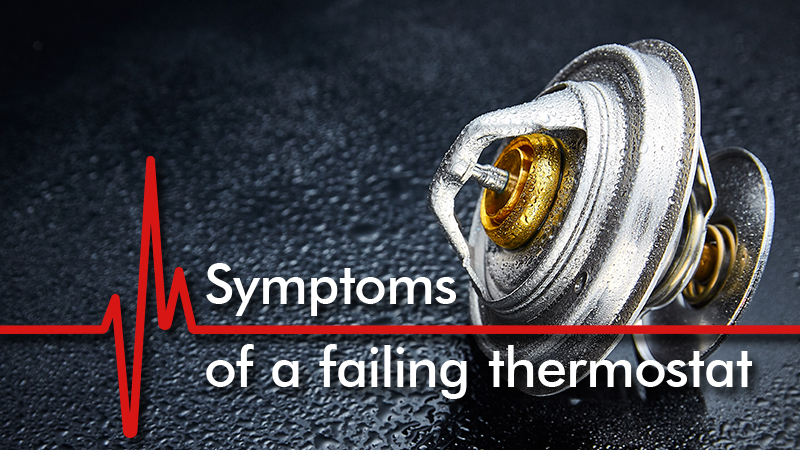
The thermostat is an essential component of the cooling system in your car because it is largely responsible for controlling the engine's temperature. It regulates the coolant flow between the engine and radiator. The thermostat remains closed to allow the engine to warm up if it is cold. The thermostat gradually opens as the engine heats up, allowing coolant to enter the radiator. Despite being a fairly straightforward component, it is a wear-and-tear item that requires replacement from time to time. If you suspect that your thermostat is malfunctioning, keep an eye out for some of the following signs.
Overheating (or overcooling)
First of all, keep in mind that air-cooled vehicles do not come with thermostats, at least not the kind we're going to describe here. However, modern air-cooled engines are rare, so there's a good chance that this information applies to your vehicle. Having said that, the most typical sign of a defective or failing thermostat is overheating. A thermostat can become stuck as it gets older, which is why this occurs. The engine will overheat if it is stuck in the closed position and prevents coolant from getting to the radiator. This can then result in significant and costly damage.
Overcooling is one of the less well-known signs of a bad thermostat. That is the opposite of overheating because, as the name suggests, the engine never reaches operating temperature. This occurs when a thermostat becomes stuck open. A number of problems can also result from overcooling.
Keep an eye on your temperature gauge. If you don't have one, keep an eye on the different warning lights in the instrument panel. Stop the engine as soon as it's safe to do so if you notice (or smell) that the temperature is rising to a dangerous level because it's never a good idea to keep driving if your car is overheating. While we don't recommend it, running the heater at full blast might help get rid of some of the extra heat if the engine is simply running hot. While it won't necessarily fix your thermostat and you'll be hot, it might allow you to reach your destination without incurring a steep towing fee. Stopping your engine is best, as damage can still happen even with the heater pulling excess heat away.
The majority of the problems brought on by overcooling are more long-term; for instance, it can shorten the life of your engine. Even though we advise against driving a car with an overcooling issue for hundreds of miles, the problem typically doesn't need to be fixed right away.
Coolant leak
A coolant leak is yet another red flag of a thermostat issue. The thermostat doesn't leak because it doesn't contain any coolant. Instead, the gasket that stops coolant from leaking out of the thermostat housing as it travels between the engine and the radiator is frequently the cause of the leak. Like all gaskets, it ages and becomes dry and brittle, failing to perform as intended. Remember that numerous parts can cause coolant to leak. Don't immediately assume the coolant you see under your car is coming from the thermostat housing. Look around the housing for deposits, drip marks, and coolant drops that could indicate a leak. If you don't notice anything unusual, another component is probably where the leak is coming from.
Getting it changed
Thermostat testing a replacement is a simple an inexpensive procedure that won't leave you without a vehicle for an extended period of time. However, because of the risks to your engine, you should get this part fixed immediately when issues arise.